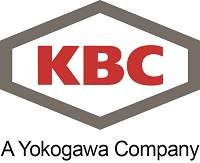KBC (A Yokogawa Company) announces the release of Petro-SIM® 7.1 digital twin technology. This release extends Petro-SIM’s scope of application, improves usability and expands its digital capabilities as an end-to-end integrated asset model for production management, asset performance management, and supply chain optimization.
The Oil & Gas and Chemical industries spend almost $1 billion annually on process simulation and optimization software. However, much of this money is wasted on models which are abandoned, inaccurate, replicated in other parts of the organization, or not transferred from one project phase to the next. These issues are pervasive across engineering, as well as operations phases of projects.
Petro-SIM helps solve this problem through the concept of ‘One Model, Many Uses’, with application across design, debottlenecking, operations, maintenance, and supply chain optimization activities. It enables the transfer of information from the engineering design phase of projects into usable data-driven insights for daily operations. This allows project developers and operators across a variety of sectors to enhance the value and extend the life of their simulation models:
- Upstream production systems, linked to the reservoir model, including wells, chokes, flowlines and all processing and power generation equipment, with common thermodynamics, fluid characterization and electrolytic chemistry throughout.
- LNG liquefaction process and utilities systems, including wells, chokes and pipelines through gathering systems, separation, acid gas removal and dehydration (pretreatment systems), main cryogenic heat exchanger(s) and storage facilities.
- Oil refining and petrochemical site-wide process and utilities systems, including crude compatibility through distillation, upgrading reactors and catalytic convertors, hydrotreating and cracking, blending facilities, olefins and aromatics.
- Ammonia site-wide process and utilities systems, including desulfurization, reforming, synthesis and separation, with consistent thermodynamics and electrolytic chemistry throughout.
“Models built using Petro-SIM in any of these industries can be used to validate licensor designs and be kept up to date by design or operations engineers, or be automatically updated when linked with an asset’s real-time plant information management system,” commented Russell Byfield, KBC Global
Simulation Business Leader. “Once operationalized with real-time production data, the simulation models become powerful digital twins delivering real-time insight for enhanced safety, reliability and profitability. Through this, our vision of ‘One Model, Many Uses’ is truly realized.”

